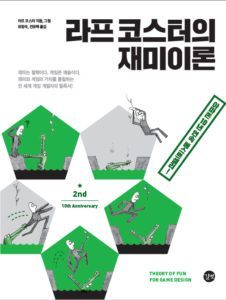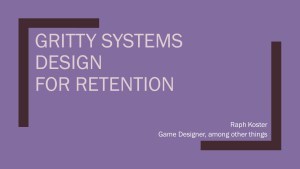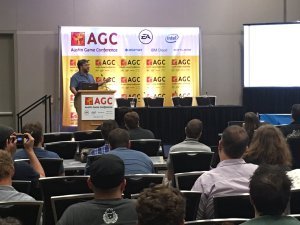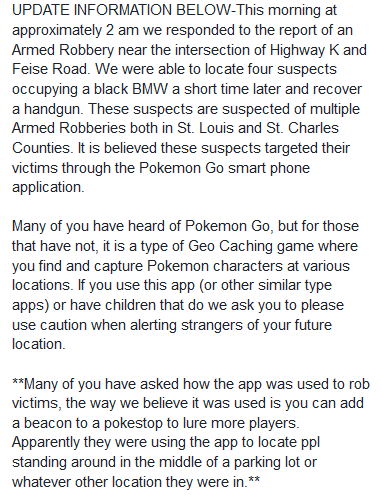Raph Koster's Blog, page 8
February 25, 2017
Some updates



 Wow, I have been slacking off on the blogging. Not since October? Yeesh.
Wow, I have been slacking off on the blogging. Not since October? Yeesh.
What’s happened is that I have been posting updates to Twitter, instead. Which this blog does notify (as well as Facebook), of course, but it does mean the site itself gets neglect!
So, to catch you up!
I am speaking at GDC 2017 next Friday, 1:30-2:30pm, on the topic “Still Logged In: What VR and AR Can Learn From MMOs.” This talk will be going over lessons painfully learned going clear back to the text mud days, on issues like harassment, governance, importation of bias to the virtual world, and much more. It’s cross-listed on the Design and Advocacy tracks; I think this latter means that I am allowed to be grumpy on stage.
The 10th Anniversary Edition of A Theory of Fun for Game Design goes to press in Korean next week! It looks like the picture on the right, and I hope to get a copy soon. Meanwhile, despite the book’s advanced age, it continues to get featured regularly in various places, such as this podcast.
I improved my “history of all videogames” arcade cabinet with upgraded robotic parts so that the monitor now smoothly auto-rotates from horizontal (for landscape arcade games and most home consoles) to vertical (for stuff like Centipede, Raiden, and of course, Vectrex emulation). I did a lengthy write-up of the process and am incredibly tickled that it’s now stickied on the ArcadeControls.com forum (the central hub for anyone building or restoring arcade cabinets) for reference for anyone else who wants to do the same. Video of the rotation is also at that link.
My 2014 talk on “Practical Creativity” also keeps getting attention, most recently as a GDC Video on YouTube (also on preceding link), which also has prompted folks to request a PDF of the slides, which was helpfully assembled by @B4ttleCat on Twitter. Grab it here.
You can also find an abridged version of my little piece on Games design and UX design in Portuguese now, thanks to Andressa Antunes. This is another one that seems to have legs, and gets cited a lot lately.
I managed to make it, despite a cold, to Doctor Cat’s amazing marathon “Gaming Legends” Twitch stream of interviews of developers. Video was posted up a while back. I encourage you to check out all the videos, if you have a full 13 hours of free time… there’s some amazing stuff in there. Scott Adams, Jordan Weisman, Steve Meretzky, Bruce Shelley, Lord British, John Romero, and lots more.
There’s been quite a lot more, but maybe I should just direct you to the Twitter feed (which is now working again in the sidebar).
Um, I’d promise to blog more often, and particularly, not just make it be random brags and updates about talks but back to meaty articles. But my track record hasn’t been great. Tell you what, once I get back from GDC, maybe people might throw me questions. 
October 17, 2016
My UAH talk: Digital Bards

 I just posted up the slides and a video of my talk at the University of Alabama Huntsville, called “Digital Bards: Interactive Media and the Evolution of Storytelling.”
I just posted up the slides and a video of my talk at the University of Alabama Huntsville, called “Digital Bards: Interactive Media and the Evolution of Storytelling.”
The video is an audio recording plus the slides; something I suppose I ought to do more often. It’s also two hours long, because there is a full half hour of Q&A at the end. Alas, the slides have basically no text on them, so the recording is really the only way to get the gist.
The talk is indebted to Matt Worch’s GDC talk on oral and print culture, which I have showered praise on before. It takes quite a while on the history of authors pushing against the conventions of print culture (as described in my post on interactivity) before giving a brief tour of some of the ways in which games are and aren’t traditional storytelling forms. So it’s fairly academic — but if you are interested in any form of digital storytelling, whether it be adventure games, hypertext, or walking simulators, it might be of interest.
Plus, I called Dungeons & Dragons “the most important advance in the field of literature in the last 500 years.”
September 28, 2016
A fish tank game interview with Markee Dragon

I recently had the chance to sit down with Markee Dragon, during AGC. It was at the offices where they are making Crowfall, but we didn’t really talk about Crowfall. Instead, we talked about… fish tanks.
Or more exactly, about game design in general, and then about how there are systems in the world around us which provide inspiration, and how a lot of them, like gardening, just have really bad user interfaces. Which led us to fish tanks, and the rich and complex game system that exists in one. So we kind of started designing that game right there on the fly.
It was a highly entertaining conversation, for me at least — and now Markee has released the video, so maybe it’s entertaining for you too!
September 25, 2016
My AGC talk on Retention and Systems Math

 Here it is, in all its mathy glory: Gritty Systems Design for Retention.
Here it is, in all its mathy glory: Gritty Systems Design for Retention.
I barely pulled off getting this one done in time. I knew what I wanted the shape of it to be, largely prompted by some of the design choices I saw in Pokemon Go. But I also knew it would involve an awful lot of spreadsheet work and an awful lot of graphs. And I wanted to make those graphs real, not just sketches, so that people could walk through the math and see how it worked.
So — I had notes, but then worked from 10pm to 3am the night before, and then from 9am to 2pm the day it was supposed to be delivered. I don’t recommend cutting it quite this close (the talk was at 4:45, so I finished with not quite three hours to spare).

Photo credit Austin Game Conference
But the graphs are all real! In particular I suspect that folks who have been reading the blog for a long while (Tobold springs to mind) might be interested in the opening section, where I walk through the precise math of “open big” that was referenced in a blog post long long ago. People who are interested in progression system design may want to look at slide 43, which describes the way advancement systems can be based on “number of successful encounters per level,” which leads to a predictable pace of leveling and numbers and curves that can be tuned without massive disruption to the whole game. There’s also descriptions of Monte Carlo modeling, and of the ways in which pure random tables unintuitively lead to very inconsistent pacing of encounters and rewards.
One of my favorite moments from the session was in the Q&A, where veteran designers from a variety of games stood up to add anecdotes and data from their experiences. The most impactful was probably when Dave Rickey described how a small kink in the XP curve in Dark Age of Camelot caused player churn at that level to change from 1-3% to 22%.
The reason that one sticks in my mind is because I did have a fair number of people tell me, over the course of the last few months, that as long as a product is profitable, surely we can’t complain too much about its design? But I think that hopefully the missed financial opportunity these graphs convey should serve to put that to rest; you might be profitable, but it’s a lot harder to increase margins when your basic design is broken. Wouldn’t it be nicer to have a solid foundation to start with? It doesn’t take significantly more effort than the broken values do.
Like many designers, I spend a lot of time in Excel. But I don’t think I have ever shown very much of that sort of work here on the blog before. I also wonder sometimes whether some of this stuff is “a lost art” to some degree, as people engage in a sort of “cargo cult” design approach of simply copying what came before without understanding the principles under the formulas. Maybe this will give a bit more of a glimpse of what a system designer’s life is actually like, for those who don’t know.
September 11, 2016
The Sunday Song: World Trade Center

I wrote this in the days immediately after 9/11. I recorded it onto a 4 track cassette recorder, basically live, then overdubbed some harmony vocals I was hearing in my head.
It’s a sketch. It’s way way long. It’s tentative. Pretty sure the whole thing is all sped up slightly, so if I sound a little chipmunk-like, that’s why.
Somehow, it’s always felt like recording it again would lose the immediacy. So I never have, and I fact I just about never play it. But if there’s a day to post it, it’s probably today.
The stories in the song are all true.
http://www.raphkoster.com/music/WorldTradeCenter.mp3
August 15, 2016
Upcoming talk: Systems Design for Retention

 I’ve mentioned it a fair amount of Twitter and Facebook, but I wanted to call attention to it here again, for those who still follow such antiquated things as blogs! I’ll be speaking at the newly revived Austin Game Conference, taking place in Austin of course, on Sept. 21 and 22.
I’ve mentioned it a fair amount of Twitter and Facebook, but I wanted to call attention to it here again, for those who still follow such antiquated things as blogs! I’ll be speaking at the newly revived Austin Game Conference, taking place in Austin of course, on Sept. 21 and 22.
For those of you who fondly remember the various incarnations of game conferences in Austin — this event is going to recapture that vibe, I think. The advisory board is pretty much the same crew of folks who curated all those excellent conferences for a decade, starting back in 2003.
My topic:
Gritty Systems Design for Retention
We all know game systems can have a huge impact on your game’s popularity, retention, and appeal. But are there ways to know in advance whether what you’ve designed will have particular results? Why yes, there are, and they’re proven methods from decades worth of different online service games. Come prepared to think about math as we dive deep into the nitty-gritty of systems game design for retention. We’ll cover XP curves, Monte Carlo modeling, multi-opponent balancing, and more.
We shall see if I can pull it off, but I hope to do this with an “interactive spreadsheet” to some degree… this will probably be the most detail-oriented design talk I’ve done since Games Are Math.
Early registration ends August 31st, and people are already making dinner plans (mmm, BBQ) so you should probably register now.
July 19, 2016
A Poke-roundup

My piece on how “AR is an MMO” traveled far and wide this week. Among the appearances:
I wrote a follow-up entitled “I Really Did Mean MMO” that anyone who liked the first post would probably like.
New World Notes asked me a few questions via Twitter DM, and the result was a little piece on what the game needs to keep thriving. I’ve played it a bunch more since, and have a completely different list at this point, but there it is if you’re interested.
Gamasutra included a snippet in their list of “quotable bits about PokemonGO.” I was also one of several designers interviewed for a story on there about the past and future of AR games.
It’s also in this week’s Critical Distance roundup.
Several MMO sites discussed the post, including Massively Overpowered, Massively Overpowered again, Mein MMO (German), MMO.it (Italian), and MMORPG.com.
So did a bunch of news sites, including El Pais (Spanish), Gamona.de (German), and NYMag — twice, once in a general article about the game, and again as one of the recommended reads in their roundup on “hot takes” on PokemonGO.
There’s probably more to come — I was asked about interviews by several outlets this week, and actually said yes to at least one, as I recall.
If you’re looking for more to read from a game-design specific angle, I recommend
Three expert mobile designers talk to The Verge about it
And a bunch more talk to The Guardian
Brian Green’s post on how MMOs are everywhere now
Wes Leviton’s article wherein he speaks from a lot of experience creation location-based games.
Also, you may recall I mentioned that alternate client views is common in MMOs? Well, here’s your global map of where all the Pokemon are. If you can get in — it’s overloading with traffic.
July 14, 2016
I really did mean “MMO”

A lot of people, as I expected, have focused on the semantics of whether or not “AR is an MMO.” Mostly, they say “well, you really mean ‘it’s like an MMO.'”
It isn’t really “like.” It actually “is.” I think people fall into the trap of thinking that the physical trumps the virtual, but that’s not the case. The virtual trumps the physical, or as Marc Andreessen puts it, software swallows everything.
Think of it this way: the phrase “geotagging” suggests that we are applying a small bit of virtual to the real. But that’s not what is happening at all. What’s actually happening is that we are building a truly massive digital world, and attaching a tiny piece of real to it, via a DB entry with a coordinate.
Currently, there are a zillion databases that hold this sort of data, siloed from one another, but the big project that Google and others have been engaged in for quite some time is to unify them. Amazon’s ASIN is a great example of one such scheme to unify “template IDs” for as many object types as they can. Put another way: the single largest database of “object types” in the world is Amazon’s, and to build it, they basically cloned the existing UPC and ISBN and other such similar databases, plus some, and unified them. They created a metaobject type that became the parent object type, only they own the address space.
Just like virtual cash is more meaningful than real cash, a business’ virtual data trumps its real data. Its reviews, its balance sheet, its customer base, are all data. Businesses without a virtualized presence increasingly don’t exist. Businesses with a virtual presence but no physical one are on the rise. Real estate prices have been fluctuating thanks to primitive mirror world implementations like Zillow and Redfin for quite some time now. Homes, businesses — these have a whole host of disparate IDs on them already.
I even had this discussion on LinkedIn, which is basically an extended character sheet for your digital avatar. Make no mistake, what happened to objects thanks to Amazon can easily happen to people. After all, the existing databases are Facebook, LinkedIn, and your tax ID slash Social Security number (or local equivalent) and your credit report. Oh, and of course your Pokemon collection. All it takes is a meta-id sitting one level higher, and those can be unified. (Spokeo and the like certainly try to do this).
This mirror worlding process is going to swallow everything. It’s at the template id stage for objects–meaning one id for a type of object–, but Internet of Things is going to change that, and move it down to individual object IDs for instances. If you have one of those nifty keychains that connects to Bluetooth, you already assigned those an id like that, which will eventually be swallowed too. And believe me, there will be pressure to unify fictional and real databases too, because having a Pokemon gym in your house is important for Zillow to know, and so on. These are what often gets termed “layers” in these circles: basically aggregations of data that you choose or do not choose to view. In the AR contact lenses of the future, layers replace apps, and you choose to run them in parallel or individually. LinkedIn and Pokemon Go team over someone’s head, exactly like howw MMOs put name and guild affiliation.
So what we are building, in fits and starts, is a large scale spatial simulation that allows clients to connect to it, which has object types for every object in the world, will eventually track as many instances of objects (physical ones like buildings, keys, cars, shipping containers; and virtual ones like businesses, Pokemon gyms, and housing lots) as is feasible, maintains a persistent data store of all of those objects, and which includes an object type for “players” who are real people.
That is pretty much a textbook definition of what a virtual world is. And it is critical to understand that the client has never been the important part. Pretty much every virtual world ever made has supported multiple views of this simulated world: text, 2d, 3d, etc.
The fact that today “AR” sometimes means “superimposing anchored CG images over video” is pretty much the least important thing about AR. Yelp or directions in Maps tells us more about AR than most anything, right now. Because the client, the display, isn’t what matters; the server is. The database.
Also fairly irrelevant is the fact that people currently conceive of AR as geolocated to the end user. Already people have “teleport hacks” in Pokemon Go and Ingress. Yelp and Zillow are premised on “teleport hacks.” In fact, Pokemon Go depends on the player having a wider view of the world than what is physically possible. We call it “augmented” for a reason. If Niantic is smart, they’ll add long-distance ways to play with locations, and long-distance communication has already been implemented via the phenomenally popular Go Chat app (the 8th most popular social networking app on the App Store!). Amazon is already the item shop for the entire world, in large part because of its virtuality.
Despite how the Metaverse Roadmap saw it in 2007 as four segments, these technologies all converge, precisely because they basically require the same backend technology.
I wrote a little bit about this technology path here: How to Build the Scary Future Today.
And the social implications here: The World, Virtual.
And of course, in my piece on Oculus which I posted here on LinkedIn a while back, but which is here: Musings on the Oculus Sale.
So… yeah. Yes, of course there’s tons of real world impacts that are uncharted territory. But there’s no doubt in my mind, this is a virtual world we’re building, then basically moving into. In an awful lot of ways, the physical part of us is going to be the least important.
Frighteningly, the best qualified people to design this brave new world are game designers, because the social network folks seem clueless about human behavior, the product people only want to sell to them, and the GIS people tend to forget they exist altogether.
And let us not forget, virtual worlds have admins who have godlike power over you. They can see everything you do. They can erase you. They can cheat and help people. They can change the laws of physics around you.
On the other hand, it also kinda gives me hope. Most game designers are nice people who care more about having a good time than about money or power. 
July 11, 2016
AR is an MMO


I’ve said this before, but in the wake of the viral success of Pokémon GO, it needs to be said again. Augmented reality is just a virtual world, an MMO, a MUD even, with all of the same design issues, plus a few new ones.
The goggles fallacy
I asked a high-powered Silicon Valley exec about the ethical implications of social VR and AR. Their response was “what ethical implications?”
To some, particularly vets of online worlds of various stripes, this may seem obvious. But most days, it feels like the average person working in social VR, AR, and the like, is ignorant of this. It’s evident in the very large pile of past lessons they are failing to heed in their designs.
But then there are also those who see these experiences as somehow qualitatively different. The commonest argument given is what I call “the goggles fallacy.” Goggles or phones, as Pokémon GO is demonstrating, are just clients. A VR headset is also just a client. And as I’ve argued exhaustively before, clients are not the part that determines whether something is a virtual world. I’ll use MMO as the base term here, as it’s shorter to type and what people are currently most familiar with.
World of Warcraft has a server that simulates space. It uses a map that is based on something made up.
Pokémon GO has a server that simulates space. It uses a map that is based on the real world.
WoW has a server that tracks individual connected clients and positions them spatially on that map.
So does Pokémon GO.
WoW has little AI spawns you can interact with.
So does Pokémon GO.
In fact, if you compare the two servers, aside from the data set, they likely do the same thing across the board.
Proponents of the idea that the client matters more usually bring up questions around immersiveness, around visceral gut reactions, around ineffable sense of presence — perhaps forgetting that as originally coined, the notion of “telepresence” was achieved with pretty crude hardware. MMOs, mirror worlds, augmented reality, lifelogging, and son are all intimately related and use the same core tech. I know the makers of Pokémon GO know this, because their CEO was involved in Meridian 59, one of the earliest MMOs, as well as in Keyhole, one of the first major mirror worlds, which became Google Earth.
 You are the client
You are the clientWith smartphones, we tend to think of “the client” as meaning the little screen we stare through to catch a Pokémon. But that’s not accurate. Take a look at the list of permissions that the game asks for. That’s not a self-contained app. That’s your whole life. You are fully an avatar. Pokémon has your email, and can send emails for you. Pokémon knows everywhere you walk. Pokémon can connect to your car. Pokémon knows who your friends are.
You are the client. You are the avatar. Your real life is what is being used for your friends list, location, chat system… all those things that you used to think of as packaged up behind an avatar, a false front. Sure, the fact is that smartphones have been gradually eating all your privacy and you’ve cheerfully given it up in order to get better directions and nifty alerts about traffic and so on. So this has been happening for a while. And yet.
The old adage is “never trust the client.” So a big first question is “can you be trusted, since you are the client?”
The answer is probably no. For example, there are no doubt thousands of people downloading the backdoored Pokémon GO app that takes complete remote control of your phone.
But that’s only the start of not trusting…
 A user-generated world
A user-generated worldThe Pokémon GO database is basically a replicated version of the Ingress database, the previous game by Niantic. And said database was heavily crowdsourced. This has already led some enterprising players to wonder aloud whether they can use Ingress play to affect the locations of Pokéstops or gyms in Pokémon GO. It’s also led to complaints that rural areas are Pokémon deserts, because Ingress players never built up the database entries in those locations.
However, it’s also led to some artifacts that are very familiar. Here’s a guy who lives in a building that Ingress players (presumably) labeled as a Pokémon GO gym. What are the implications here? Aside from the very real risk of constant home invasions, we’re seeing a game AR layer used to directly affect home value and livability, outside of the owner’s control. Some are seeing this as a benefit, as in the examples of real estate listings using Pokémon GO data as a value-add. Others, who have reported a dozen people in their backyard at 2am, are less happy.
What is the fruition of this? Long ago, in Star Wars Galaxies, we allowed players to freely build homes and even cities, anywhere on the map that wasn’t explicitly disallowed. Cities allowed players to set rules about who could attack other players within their borders. A few sneaky players set up their cities surrounding or even directly on top of designer-created content, and then started extorting players who wanted to visit that content — or just killing them, in the game. (You can’t kill another player in Pokémon GO, but… you are the client. We’ll get back to that in a second).
 Affecting the real world economy
Affecting the real world economySo here we are affecting the livability of real estate. But Pokémon GO might also need to take heed of the lessons from managing game economies in MMOs as well. We learned through some very painful lessons exactly how powerful our control of the economy was pretty early on in MMOs, after some big mistakes. Like, that one time we accidentally created an entire secondary market and exchange rate between real world money and digital assets, oops. Surely that can’t happen with Pokémon , can it?
Well, actually… we’re already seeing coffee shops advertising discounts for those who happen to be on specific Pokémon GO teams, and today there was a Forbes article giving business advice about how to leverage the game layer for more customers. Make no mistake, these are the first steps towards real-money trade, and are another way in which the game is affecting the economy. There has already been discussion of how there will be Pokémon trading; expect this to spill over into real world effects immediately. After all, Randy Farmer laid it out very clearly back in 2004:
So, the steps on the virtual economy slippery slope are:
Gifting → Twinking
Gifting + Multiple Chars/Server → Muling
Gifting + Messaging + Trust → Trading
Trading – Messaging – Trust + In World Machinery → Robust Trading
Robust Trading + Scarcity + Liquidity → External Market (eBay)
External Market – Trust + In World Machinery → GOM
Beyond that, there’s a very real question of fairness. If one coffee shop or bar is a Pokéstop and another one isn’t, Niantic or Nintendo are literally putting their thumb on the scale of which business does better on a given street. If the game continues to thrive, expect this to become a sore spot for people who suddenly found their real life business slurped into a game map.
Player versus player
Player vs player activity is a common element of the elder game in MMOs. Pokémon GO has gone ahead with this, and following on the model from Ingress and earlier AR games, has allowed for PvP activity in capturing gyms to one team or another.
But… you’re the client. It’s trivial to envisage a gym made physically inaccessible by other players — locked doors? Physical intimidation?
Already, given the recent shootings of black men and the sniper attack at the Black Lives Matter protest in Dallas, some have raised concerns about “Pokémon While Black” as a possible risk to life and limb. There are also, thank heavens, stories about the exact opposite as in the widely circulated image telling the story of a mixed race group in a park in the middle of the night, possibly suspected of making a drug deal, but instead persuading the police officer who showed up to instead join them in playing the game.

But is the fear overblown? Well, no. You’re the client, and there’s no PK switch in real life. In Ultima Online circa 1998, when we were available in Hong Kong, we suffered through the problem of actual real life triad gangs forming guilds and engaging in PK wars. Then they took those fights to the real life streets. Far as I know, Pokémon GO doesn’t have a “call the admins, uh, I mean police” panic button. Make no mistake: by creating teams at all, this game has put in place at least a little context encouraging players to aggress one another. The developers only hope that it only happens via game-sanctioned means.
The stuff that has not happened…. yet
Don’t get me wrong. The social element here is powerful. Pokémon GO has the best emote system available: the human body. It has the most elegant and all consuming chat system ever: smartphones for tells and local voice with full presence for local chat. It has the most detailed and highly simulated game map ever, thanks to the real world. We are seeing amazing social activity happening, amazing bursts of joy, across the world.
But we should absolutely expect everything that happened in MMOs to happen here, because AR is an MMO. Every bug, every emergent feature you thought was cool in WoW or EVE Online, to happen here, but in your local park and (goodness!) at your local church.
I’m happy to see that Niantic has decided, a few days after launch, that maybe it might be important to hire a community manager.
Tech community professionals! @NianticLabs is hiring a community manager for #PokemonGO https://t.co/VC1gYzPrvE pic.twitter.com/M6LtMMWkc6
— Jessica Rose (@jesslynnrose) July 11, 2016
But really, it’s a little late to this idea that maybe they are running a community. It should have been obvious. After all, they have avatars. Who talk. Who will trade. Who move about a world. Who acquire stuff. Who interact. They affect the map. They affect the real world economy. Soon you’ll see each other’s profiles, sue the game to track them across the world, and probably much more, if not in this game, then in others.
This is a government
 We have a name for entities in the real world which have access to your private data, which have controls on the economy, which can unlaterally affect real estate values, and which can set forth rules via commission or omission on how people interact. In the virtual worlds, we said that those who had power over the world were gods, immortals, wizards.
We have a name for entities in the real world which have access to your private data, which have controls on the economy, which can unlaterally affect real estate values, and which can set forth rules via commission or omission on how people interact. In the virtual worlds, we said that those who had power over the world were gods, immortals, wizards.
Facebook, Google, and yes now Nintendo, The Pokémon Company, and Niantic, as they move into AR, are basically like governments. And if they are going to start impinging upon the public sphere, it’s getting to be time that they take it seriously and actually walk through the consequences and ripple effects of what they are doing.
In O’Fallon, Missouri, we see the game tool of “Pokémon lures” used to entrap armed robbery victims. This is a direct consequence of the game mechanics, a behavior that this game enables that was not possible before.
Already we see people photoshopping Pokémon onto armed police in SWAT gear in Baton Rouge. What happens when the tools you enable for this innocent game are used in radically different social contexts?
So here we go again, because every year this little bit of writing gets to be more and more pointed:
Someday there won’t be any admins. Someday it’s gonna be your bank records and your grocery shopping and your credit report and yes, your virtual homepage with data that exists nowhere else. Someday it’s gonna be Snow Crash and Neuromancer and Otherland all wrapped up into one, and it may be a little harder to write to Customer Service. Your avatar profile might be your credit record and your resume and your academic transcript, as well as your XP earned.
On the day that happens, I bet we’ll all wish we had a few more rights in the face of a very large, distributed server, anarchic, virtual world where it might be very very hard to move to a different service provider.
Not long ago, I spoke with a very high-powered Silicon Valley exec. I asked this person about the ethical implications of social VR and AR. Their response was “what ethical implications?”
Frankly, that scared the shit out of me. You design this society. Intentionally or unintentionally, you are shaping how people will behave.
Further Reading
There’s a bunch of science fiction you should read.
The fullest exploration of AR gaming is Vernor Vinge’s Rainbows End [Amazon].
To think about crossover of virtual and real world behavior, I suggest Cory Doctorow’s For the Win [Amazon].
I’d also suggest Charles Stross’ Halting State [Amazon] as a good exploration of this crossover.
If you are doing anything at all with social VR or AR, please please please read up on the history of virtual worlds. Realize that in your cluelessness you may well recreate some famously ugly moments, only this time with even greater psychological and physical consequence. If you do, it’s entirely on you.
Julian Dibbell’s “A Rape in Cyberspace,” or even better the entirely of the book My Tiny Life [Amazon]. The capabilities of the virtual world described here aren’t yet available in AR or VR, but they’re coming pretty quick.
The Black Rose Incident is illustrative of gamer psychology in virtual settings, and how quickly and easily we can dehumanize.
The aforementioned Rights of Avatars is, if I may humbly say so, foundational to your understanding of what is going to eat your life.
Dr Richard Bartle’s Designing Virtual Worlds [Amazon] should open eyes as to the full array of issues you need to worry about when creating a virtual world — of any stripe.
Alternatively, consider hiring any of the many folks experienced in this arena, and actually listening to them.
May 23, 2016
The Limits of Formalism, my talk from BIRS

 I spent last week up in the mountains around Banff, Canada, with a spectacular group of people, as we talked about “computational modeling of games.” This was a workshop held at the Banff International Research Station, or BIRS, and organized by Andy Nealen of NYU and Michael Mateas of UC Santa Cruz. As you may be able to tell from the title, it was moderately mathy, though I was assured by several of those there that it was dramatically less so than an actual mathematician would expect, and certainly less so than the other workshops in the series!
I spent last week up in the mountains around Banff, Canada, with a spectacular group of people, as we talked about “computational modeling of games.” This was a workshop held at the Banff International Research Station, or BIRS, and organized by Andy Nealen of NYU and Michael Mateas of UC Santa Cruz. As you may be able to tell from the title, it was moderately mathy, though I was assured by several of those there that it was dramatically less so than an actual mathematician would expect, and certainly less so than the other workshops in the series!
I was asked to give a “seed talk” on the question of “the limits of formalism.” The questions Michael and Andy asked me to answer were
What leverage does a formalist approach to game design give you? What might it leave out? What are the broad contours of the landscape of formalist game design theories? What intellectual commitments are formalist game designers making? What are the biggest holes in our current understanding of formalist approaches to game design?
A page for the talk can be found here, and it includes the slides, a video, and a downloadable PDF of the slides.
The big point I was trying to get across can be boiled down to the word “consilience.” To me, the limit of formalism is obvious, and it’s the same damn thing we have been fighting over since lomg before I wrote “Two cultures and games.” As we approach the increasingly larger complex knot that is “games” we must become at minimum more tolerant of the varying disciplines that go into them, and ideally become more cross-disciplinary ourselves. Fissures have appeared in what was once a small community; these stress fractures are perhaps inevitable as the scale of everything grows, but are nonetheless worrying to me. Gaps in communication between AAA and indie, computational modelers and game grammarians, formalists and game studies folk, game critics and gamers, and many more, speak to an increasing Balkanization of our understanding of game.
 Now, the group there in Banff was not only extremely open to alternate viewpoints, but openly enthusiastic about them, and already exploring lots of interesting cross-disciplinary directions themselves. So to an extent I was building a strawman. But a common experience is to find oneself touching on a field about which one knows little; how does one ramp up on that, when there’s not a layman’s introduction or simplified version easily available — or even when there might be, but nobody from outside knows about it? I felt this keenly as they tossed around math and modeling terms with which I was not familiar, and I felt it for them as they explored modeling wildly diverse areas of human experience.
Now, the group there in Banff was not only extremely open to alternate viewpoints, but openly enthusiastic about them, and already exploring lots of interesting cross-disciplinary directions themselves. So to an extent I was building a strawman. But a common experience is to find oneself touching on a field about which one knows little; how does one ramp up on that, when there’s not a layman’s introduction or simplified version easily available — or even when there might be, but nobody from outside knows about it? I felt this keenly as they tossed around math and modeling terms with which I was not familiar, and I felt it for them as they explored modeling wildly diverse areas of human experience.
Basically, all sorts of disciplines have their formalisms, and to really cover “games” you kind of need to learn all of them; but if you try, you may never get to go deep on anything, or you may simply never finish.
Even the way in which we selected problems to address in workshops suffered from this; people stood up and put extremely varied problem topics on the board, ranging from how to build game rule sets that encouraged players to tell stories about the game after play, to generating meditation gardens. We then signed up to varying groups based on what sounded like a good workshop. But of course, we then tended to select the topics for which we had some affinity, which unless you held to rigid discipline, could very well work against your joining a group that could really have needed your insight. I know I avoided groups which had problems that I felt I had spent a lot of time on, in favor of groups that had something fresh and different; to what degree does that leave that given group without the benefit of past work? Similarly, it would have been nice to have more narrative folks in the workshops I was in that dealt with more mathy topics.
 All in all, the workshop was a tremendous success; I don’t want to portray this larger problem as having had a negative effect. In fact, quite the opposite, as by the end of the week it was clear that there was quite a lot of very interesting cross-pollination going on. Among the developments that were most interesting to me:
All in all, the workshop was a tremendous success; I don’t want to portray this larger problem as having had a negative effect. In fact, quite the opposite, as by the end of the week it was clear that there was quite a lot of very interesting cross-pollination going on. Among the developments that were most interesting to me:
Machinations and derivations thereof seem to have had strong traction in this particular crowd, which is interesting because my sense is that more commercially oriented parts of the design community haven’t picked it up as a tool that much. Instead, I see a lot of “napkin languages” and use one myself. Further, the napkin languages seem to be very verb-centric and also more amenable to visualizing higher-order semantics, tactics, and heuristics — in other words, using simple game grammar diagrams it’s much easier to show things like “attack” and “defend” whereas the more formal models are down at granular actions like “take card.” Machinations is far superior at modeling economies; grammar diagrams are better at conveying play in the way a player thinks about a game. There are big things these two approaches could learn from one another. We did one workshop specifically on fruitful communication between designers and academics, and video of our brief five minute summary can be seen here.
It strikes me that many in the academic world are very very interested in procedural generation of all sorts of things, to a degree that both the AAA and the narrative indie community are not, given their emphasis on control of the player’s experience. There is a lot for the two groups to learn from each other there as well. We had several interesting workshops on generating things that fall on the experiential side of things. Among them were the aforementioned meditation gardens and another on generating environmental storytelling spaces, a procedurally generated karaoke game, and Vi Hart’s boobscape.io (output of a workshop on PCG and feminism)…
I need to mull over some of the other things more before being able to blog coherently about them. But if any of this is vaguely interesting, I definitely urge you to check out the complete set of videos, photos, and notes available at the website BIRS provided for the workshop. And also track down the work done by all of the individual people who were there! I know I will be doing so.




